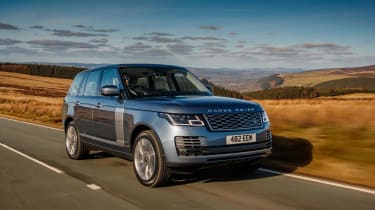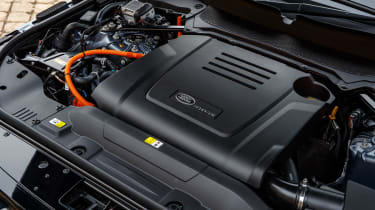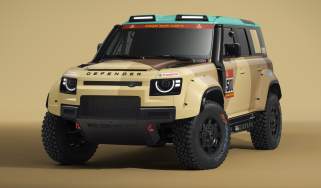Range Rover (L405, 2012-2021) review – engine, gearbox and technical highlights
The engine range has changed over recent years, with two new straight-six Ingenium engines in petrol and diesel forms, a plug-in and the usual supercharged V8s
The L405 Range Rover is available with four different engine options in six states of tune depending on the trim level. Kicking off the range is the new Ingenium in-line six-cylinder diesel engine that replaces both the previous V6 and V8 diesels in 296bhp and 345bhp power outputs.
Both engines share a modular construction with other Ingenium engines across the JLR group, and are supported by a 48V mild-hybrid system that extends the engine’s stop-start capability and torque-fills at low rpm. While the 296bhp diesel has tangible gains in both power and torque (25bhp and 19lb ft), the 345bhp version loses 28lb ft of torque on the old V8.
A 394bhp Ingenium mild-hybrid turbocharged six-cylinder petrol was added to the range last year, forming the entry-level engine option for the USA and other markets not suited to diesel.
At the cleaner end of the range is the plug-in hybrid that combines a 2-litre turbocharged four-cylinder petrol with an electric motor between it and the transmission for a combined output of 399bhp. Torque is also impressive – quoted at 472lb ft – thanks in part to the twist generated by that electric motor.
At the other end of the spectrum is the 5-litre supercharged V8 that’s been in use within JLR models since 2009. Despite its considerable age and lack of efficiency, it still proves to be a popular addition to the engine range. It’s available in either 520bhp or 557bhp forms, the latter being reserved for SVO’s SVAutobiography specification.
All engines are connected to an eight-speed ZF automatic transmission, with power being sent to all four wheels via a twin-speed transfer case for high and low range. Air suspension with adjustable ride height, adaptive dampers and Land Rover’s full terrain response system are also standard across all models and engine variants.
On its debut in 2013, the Range Rover was swapped onto a new all-aluminium unibody construction in contrast to the previous part monocoque-part ladder frame chassis design, reducing weight that was promptly replaced with extra hardware, not to mention its bigger footprint on the road




